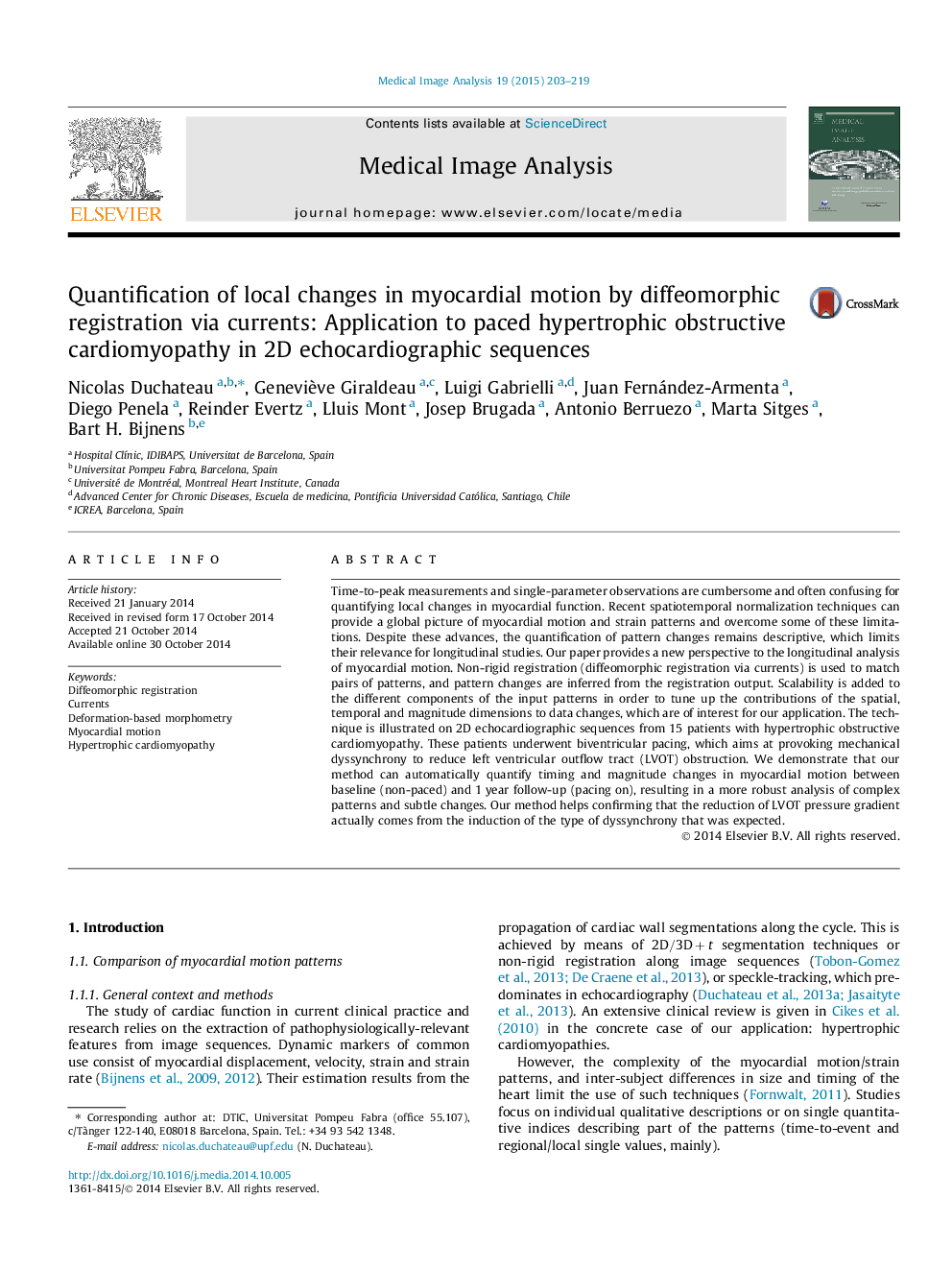| کد مقاله | کد نشریه | سال انتشار | مقاله انگلیسی | نسخه تمام متن |
|---|---|---|---|---|
| 443904 | 692805 | 2015 | 17 صفحه PDF | دانلود رایگان |
• Myocardial motion is spatiotemporally aligned to allow inter-subject comparisons.
• Pattern changes are inferred from diffeomorphic registration via currents.
• Scalability is added to tune up the contributions of each dimension to data changes.
• 15 HOCM patients undergoing biventricular pacing were studied longitudinally.
• Clinically, our method confirms the induction of the expected dyssynchrony patterns.
Time-to-peak measurements and single-parameter observations are cumbersome and often confusing for quantifying local changes in myocardial function. Recent spatiotemporal normalization techniques can provide a global picture of myocardial motion and strain patterns and overcome some of these limitations. Despite these advances, the quantification of pattern changes remains descriptive, which limits their relevance for longitudinal studies. Our paper provides a new perspective to the longitudinal analysis of myocardial motion. Non-rigid registration (diffeomorphic registration via currents) is used to match pairs of patterns, and pattern changes are inferred from the registration output. Scalability is added to the different components of the input patterns in order to tune up the contributions of the spatial, temporal and magnitude dimensions to data changes, which are of interest for our application. The technique is illustrated on 2D echocardiographic sequences from 15 patients with hypertrophic obstructive cardiomyopathy. These patients underwent biventricular pacing, which aims at provoking mechanical dyssynchrony to reduce left ventricular outflow tract (LVOT) obstruction. We demonstrate that our method can automatically quantify timing and magnitude changes in myocardial motion between baseline (non-paced) and 1 year follow-up (pacing on), resulting in a more robust analysis of complex patterns and subtle changes. Our method helps confirming that the reduction of LVOT pressure gradient actually comes from the induction of the type of dyssynchrony that was expected.
Figure optionsDownload high-quality image (313 K)Download as PowerPoint slide
Journal: Medical Image Analysis - Volume 19, Issue 1, January 2015, Pages 203–219
